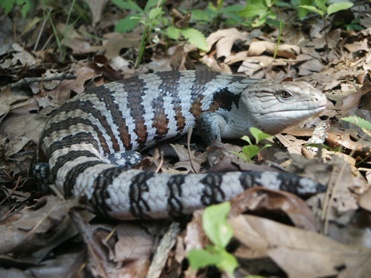Blue tongue skinks belong to the
genus Tiliqua, in which they comprise a number of
species and sub-species. These animals are found in
the wild throughout much of New Guinea and
Australia. While animals are still exported from
their countries of origin in New Guinea, all blue
tongue skins of Australian origin are captive bred,
mostly in the United States, Europe, and Japan.
In nature, blue tongue skinks are
found in a wide variety of habitats. Animals hailing
from Australia’s interior deserts are adapted to a
harsh desert lifestyle, while those species from
more northern ranges are used to a more tropical
environment.
These animals get their common
name from the bright blue tongues that they possess
and display when startled or during territorial
disputes. As pets, they rank high on the list as a
result of their gentile demeanor, appearance, and
ease of care. This information was taken from
http://lllreptile.com
At Cub Creek Science Camp we have
a pair of Blue Tongue Skinks named Kia and Cobalt.
They have the most surprising tongues that are quite
long. The tongue of an adult Blue Tongue Skink
is around 14 to 18 inches long. Blue Tongue
Skinks have a long life span even for a lizard. They
can live up to 20 to 30 years in captivity.
Our Science Camp campers enjoy holding and learning
about these beautiful reptiles.
